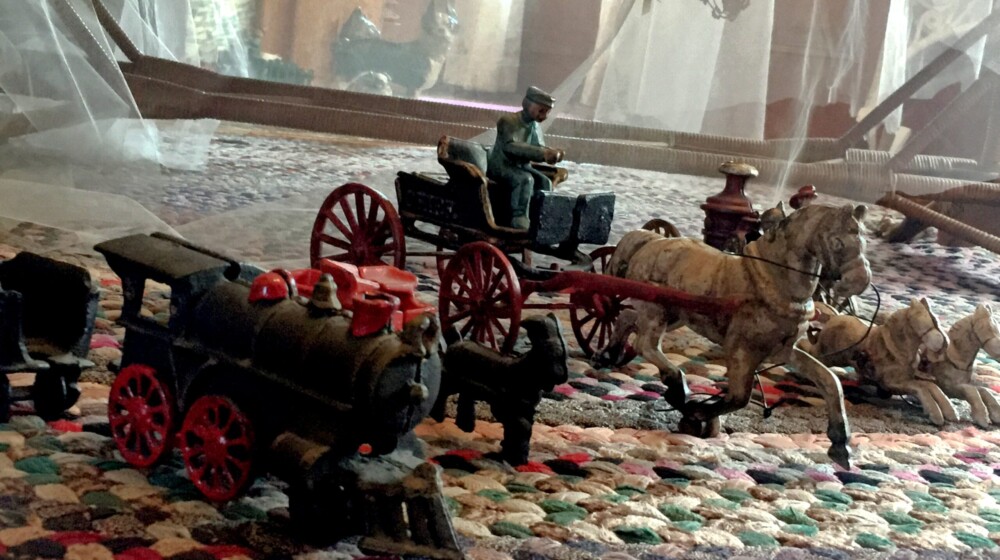Victorian Toys
Did you know…
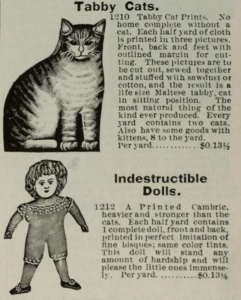 Kids have been playing with toys for thousands of years. Figures that have been identified as toys in ancient Sumer and India date back to 2600-2500 BCE, kites from China date back to 1000 BCE, and the earliest mention of toys in historical record date back to 500 BCE in Greece. That’s a lot of time to play!
Kids have been playing with toys for thousands of years. Figures that have been identified as toys in ancient Sumer and India date back to 2600-2500 BCE, kites from China date back to 1000 BCE, and the earliest mention of toys in historical record date back to 500 BCE in Greece. That’s a lot of time to play!
This time of year seems to be specifically made for toys, though – that space during Winter Break between Christmas and before school starts again – where kids have few demands on their time other than to just be kids and play.
When the Rossons, Goldbergs, Higleys and Gammels lived in Rosson House, their kids likely had a similar break for school during the winter as far as we’ve been able to tell through looking at local newspapers – about two weeks at the end of the year and the beginning of the next. (Read our article here about what could have occasionally changed that school timeline.) And, thanks to the Industrial Revolution, there were lots of toys to be had more cheaply than ever before.
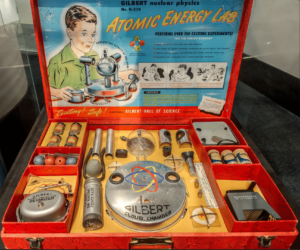 Cheap toys weren’t always a good thing, though, as regulations on materials were almost nonexistent, and toys were often made of things that could harm kids. Brightly colored toys were painted with lead paint (like our antique cast iron toys in the picture at the top of the page), which ingesting even in minuscule amounts can cause brain damage, particularly in children. As plastics became more popular, a highly flammable type of plastic called celluloid that could spontaneously combust was used to make everything from hairbrushes and billiard balls to dolls. Asbestos was used in toys, too, well into the 20th century, and radium was used to make toys glow in the dark. The Gilbert U-238 Atomic Energy Lab Kit pictured here (1950) even included radioactive uranium ore samples! It wasn’t until the 1960s when the Child Protection Act (1960), the Hazardous Substances Act (1966), and the Toy Safety Act (1969) when toys made from materials deemed unsafe for consumers began to be pulled from the market.
Cheap toys weren’t always a good thing, though, as regulations on materials were almost nonexistent, and toys were often made of things that could harm kids. Brightly colored toys were painted with lead paint (like our antique cast iron toys in the picture at the top of the page), which ingesting even in minuscule amounts can cause brain damage, particularly in children. As plastics became more popular, a highly flammable type of plastic called celluloid that could spontaneously combust was used to make everything from hairbrushes and billiard balls to dolls. Asbestos was used in toys, too, well into the 20th century, and radium was used to make toys glow in the dark. The Gilbert U-238 Atomic Energy Lab Kit pictured here (1950) even included radioactive uranium ore samples! It wasn’t until the 1960s when the Child Protection Act (1960), the Hazardous Substances Act (1966), and the Toy Safety Act (1969) when toys made from materials deemed unsafe for consumers began to be pulled from the market.
-
Famous Toys
The National Toy Hall of Fame (Rochester, NY) includes simple childhood toys like sticks, blankets, and cardboard boxes, whose value is in kids’ imaginative ability more than anything else. Here’s a list the toys, simple and complex, inducted from its first year in 1998 to when this article was written in 2020 (additions added in December 2023):
1998 – Barbie; Crayola Crayons; Erector Set; Etch A Sketch; Frisbee; LEGO; Marbles; Monopoly; Play-Doh; Teddy Bear; Tinkertoy
1999 – Duncan Yo-Yo; Hula Hoop; Lincoln Logs; Radio Flyer Wagon; Roller Skates; View Master
2000 – Bicycle; Jacks; Jump Rope; Mr. Potato Head
2001 – Silly Putty; Slinky; Tonka Trucks
2002 – Jigsaw Puzzle; Raggedy Ann and Andy
2003 – Alphabet Blocks; Checkers
2004 – G.I. Joe; Rocking Horse; Scrabble
2005 – Candy Land; Cardboard Box; Jack-in-the-Box
2006 – Easy-Bake Oven; Lionel Trains
2007 – Arari 2600 Game System; Kite
2008 – Baby Doll; Skateboard; Stick
2009 – Ball; Big Wheel; Nintendo Game Boy
2010 – The Game of Life; Playing Cards
2011 – Blanket; Dollhouse; Hot Wheels
2012 – Dominoes; Star Wars Action Figures
2013 – Chess; Rubber Duck
2014 – Bubbles; Little Green Army Men; Rubik’s Cube
2015 – Puppet; Super Soaker; Twister
2016 – Dungeons & Dragons; Fisher-Price Little People; Swing
2017 – Clue; Paper Airplane; Wiffle Ball
2018 – Magic 8 Ball; Pinball; Uno
2019 – Coloring Book; Magic – The Gathering; Matchbox Cars
2020 – Baby Nancy; Jenga; Sidewalk Chalk
2021 – American Girl Dolls; Risk (board game); Sand
2022 – Masters of the Universe; Lite-Brite; Spinning Top
2023 – Cabbage Patch Kids; Fisher-Price Corn Popper; Nerf Toys; Baseball Cards
Learn more about the toys on this list by going to the Toy Hall of Fame website. Think they left something out? You can also nominate a toy you think deserves a spot on this list by clicking here.
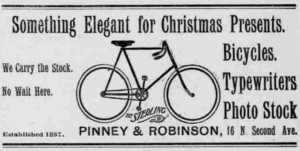 If you browse through turn-of-the-century newspapers around December, or seasonal catalogs, you could find many kinds of toys – bicycles, dolls, wagons, toy trains, teddy bears, rocking horses, games, children’s books, and more. Many toys prepared children for their roles in society, with dolls and kitchen sets for girls, and popguns, toy soldiers, and wagons for boys. And, though they’re not as technologically advanced as you would find now, toys at the turn-of-the-century were the steppingstones for today’s toys. Like the vintage-style cast iron bank we have out for people to touch at Rosson House, some toys had moving parts or were automated with wind-up keys or little working engines. Dolls’ eyes could open and close, and in some cases could even talk! Thomas Edison invented a talking doll in 1890 that could recite “Twinkle, Twinkle Little Star,” “Hickory, Dickory, Dock,” and other childhood poems. You can still hear the slightly creepy recordings today at this link through the National Parks Service.
If you browse through turn-of-the-century newspapers around December, or seasonal catalogs, you could find many kinds of toys – bicycles, dolls, wagons, toy trains, teddy bears, rocking horses, games, children’s books, and more. Many toys prepared children for their roles in society, with dolls and kitchen sets for girls, and popguns, toy soldiers, and wagons for boys. And, though they’re not as technologically advanced as you would find now, toys at the turn-of-the-century were the steppingstones for today’s toys. Like the vintage-style cast iron bank we have out for people to touch at Rosson House, some toys had moving parts or were automated with wind-up keys or little working engines. Dolls’ eyes could open and close, and in some cases could even talk! Thomas Edison invented a talking doll in 1890 that could recite “Twinkle, Twinkle Little Star,” “Hickory, Dickory, Dock,” and other childhood poems. You can still hear the slightly creepy recordings today at this link through the National Parks Service.
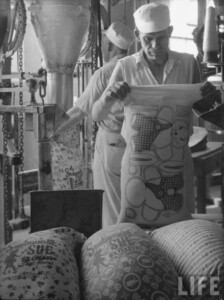 As fun as it is to reminisce about toys from the past, it’s important to remember that they were, and remain today, presents for families who could afford them. If a family could afford a present for their child(ren), it would have been something that was practical, like clothing, and if a new doll was given as a gift, it often was made at home with scraps of material. During the Great Depression, flour and feed manufacturers would eventually print patterns for clothing and even stuffed animals on their bags so that families in need could reuse them, like in the picture of the Life Magazine cover pictured here.
As fun as it is to reminisce about toys from the past, it’s important to remember that they were, and remain today, presents for families who could afford them. If a family could afford a present for their child(ren), it would have been something that was practical, like clothing, and if a new doll was given as a gift, it often was made at home with scraps of material. During the Great Depression, flour and feed manufacturers would eventually print patterns for clothing and even stuffed animals on their bags so that families in need could reuse them, like in the picture of the Life Magazine cover pictured here.
New or old, simple or complex, handmade or handed down – what was your favorite toy growing up?
Learn about other dangers in Victorian daily life from our blog.
Find out what Phoenicians were giving each other for the holidays at the turn-of-the-century, and learn about the history of the game of croquet from our blog.
Information for this article was found at the Driehous Museum blog, the 1897 and 1910 Sears and Roebuck catalogs, the Library of Congress Chronicling America digital newspaper archive, the Encyclopedia Britannica, the National Toy Hall of Fame, and the National Parks Service.
You can make a difference at Heritage Square today!
- Donate. Even if it’s $10. Because small donations can come together to have a big impact.
- Become a Member. Members get extra benefits the general public does not, and your membership dollars support our programs, exhibits and events. It’s a win-win!
Archive
-
2024
-
July (1)
-
June (1)
-
May (1)
-
April (1)
-
March (1)
-
February (1)
-
January (1)
-
-
2023
-
December (1)
-
November (1)
-
October (1)
-
September (1)
-
August (1)
-
July (1)
-
June (1)
-
May (1)
-
April (1)
-
March (1)
-
February (1)
-
January (1)
-
-
2022
-
December (1)
-
November (1)
-
October (1)
-
September (1)
-
August (1)
-
July (1)
-
June (1)
-
May (1)
-
April (1)
-
-
2021
-
December (1)
-
November (1)
-
October (1)
-
September (1)
-
August (1)
-
July (1)
-
June (1)
-
May (1)
-
April (1)
-
March (1)
-
February (1)
-
January (1)
-
-
2020
-
December (1)
-
November (1)
-
October (1)
-
September (1)
-
August (1)
-
July (1)
-
June (1)
-
May (1)
-
April (1)
-
March (1)
-
February (1)
-
January (1)
-
-
2019
-
December (1)
-
November (1)
-
October (1)
-
September (1)
-
August (1)
-
July (1)
-
June (1)
-
May (1)
-
April (1)
-
March (1)
-
February (1)
-
January (1)
-
-
2018
-
December (1)
-
November (1)
-
October (1)
-
September (1)
-
August (1)
-
July (1)
-
May (1)
-
April (1)
-
March (1)
-
February (1)
-
January (1)
-
-
2017
-
December (1)
-
November (1)
-
October (1)
-
September (1)
-
August (1)
-
July (1)
-
June (1)
-
May (1)
-
April (1)
-
March (1)
-
February (1)
-
January (1)
-
-
2016
-
December (1)
-
-
2015
-
2014
-
July (1)
-
